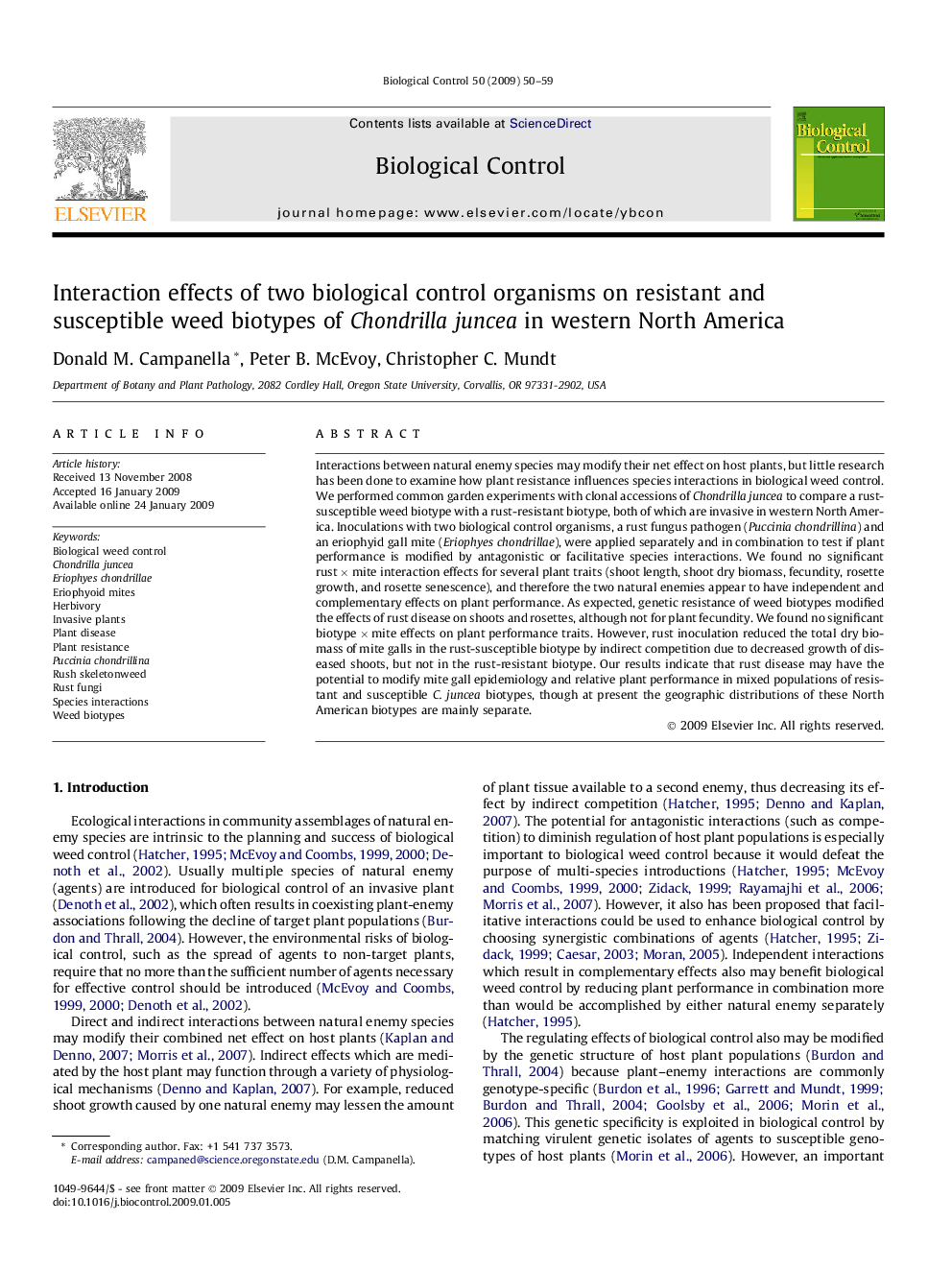| Article ID | Journal | Published Year | Pages | File Type |
|---|---|---|---|---|
| 4504734 | Biological Control | 2009 | 10 Pages |
Interactions between natural enemy species may modify their net effect on host plants, but little research has been done to examine how plant resistance influences species interactions in biological weed control. We performed common garden experiments with clonal accessions of Chondrilla juncea to compare a rust-susceptible weed biotype with a rust-resistant biotype, both of which are invasive in western North America. Inoculations with two biological control organisms, a rust fungus pathogen (Puccinia chondrillina) and an eriophyid gall mite (Eriophyes chondrillae), were applied separately and in combination to test if plant performance is modified by antagonistic or facilitative species interactions. We found no significant rust × mite interaction effects for several plant traits (shoot length, shoot dry biomass, fecundity, rosette growth, and rosette senescence), and therefore the two natural enemies appear to have independent and complementary effects on plant performance. As expected, genetic resistance of weed biotypes modified the effects of rust disease on shoots and rosettes, although not for plant fecundity. We found no significant biotype × mite effects on plant performance traits. However, rust inoculation reduced the total dry biomass of mite galls in the rust-susceptible biotype by indirect competition due to decreased growth of diseased shoots, but not in the rust-resistant biotype. Our results indicate that rust disease may have the potential to modify mite gall epidemiology and relative plant performance in mixed populations of resistant and susceptible C. juncea biotypes, though at present the geographic distributions of these North American biotypes are mainly separate.
